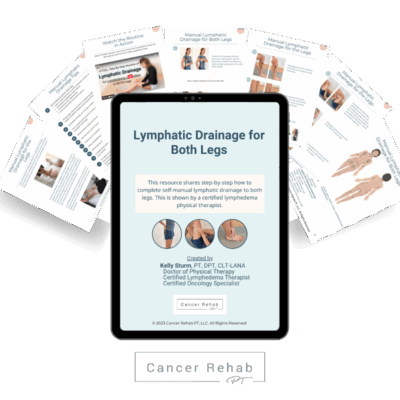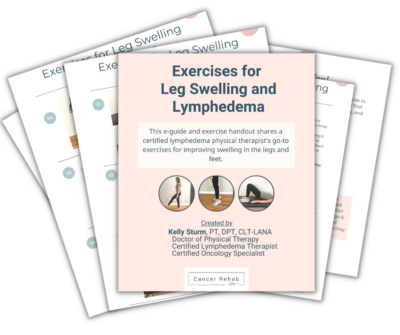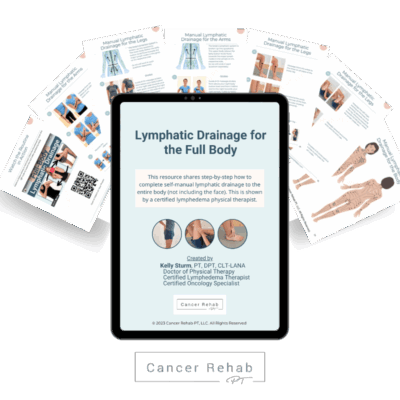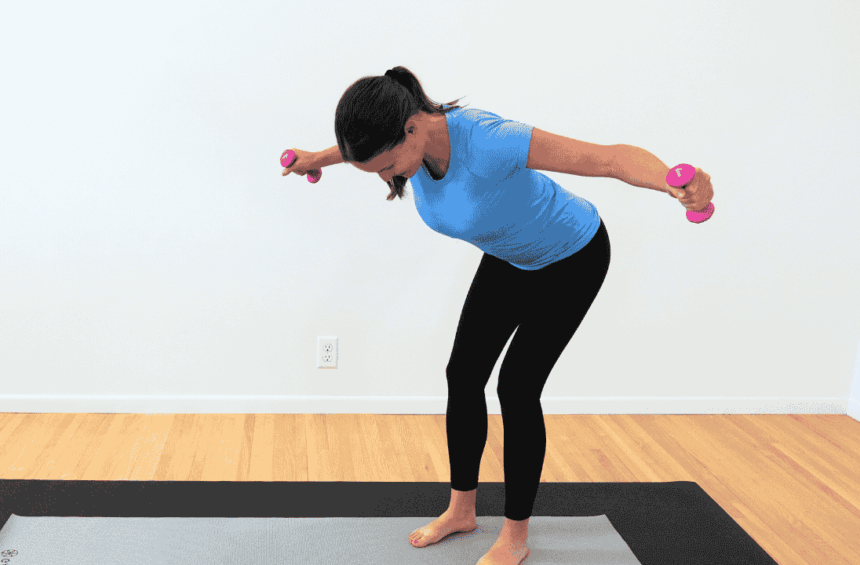You just brought a whole human into the world through major abdominal surgery. That’s not something to brush off lightly. And now, you might be dealing with swelling after C-section, and wondering if there’s a way to reduce it or make it go down faster.
Some swelling is normal during the healing process, but you can also take steps to help your body process the excess fluid faster.
As a certified lymphatic specialist, helping people reduce swelling is what I do for work. But I’m also a mom who’s been through a C-section myself, so I know what this recovery feels like from my personal experience.
I’m going to walk you through a lymphatic drainage routine you can use to help reduce that swelling, plus some practical tips.
What Causes Swelling After C-Section?
There are a few different reasons for postpartum edema, or swelling, after a C-section.
Your body retained a lot of extra fluid during pregnancy and after delivery, and it needs time to flush all of that out through your kidneys and lymphatic system. Plus, you’re likely retaining IV fluids.
But after a C-section, you’re dealing with postpartum swelling from pregnancy and swelling from surgery.
Any time you have surgery, your body sends extra fluid to the area to help with healing. That’s why you might notice swelling around your incision and in your abdomen.
Other common areas where you might experience swelling include:
- Feet
- Legs
- Hands
- Face
According to research from the World Health Organization (WHO), almost a third (29%) of all births are likely to be C-sections by 2030.
But unfortunately, topics like postpartum swelling still don’t get enough attention. We just hear that it’s “totally normal,” but there’s barely any guidance on how to make your postpartum recovery just a little more comfortable in terms of swelling.
Is Swelling Normal After C-Section?
Yes, for most moms, it’s normal to experience some swelling in the postpartum period. Your body just went through a major surgery, and it needs time to heal and rebalance itself.
Most swelling will start to go down about a week or up to two weeks after delivery.
That said, swelling can also sometimes signal that something needs medical attention. You should contact your doctor immediately if you notice any of these warning signs:
- Sudden or severe swelling that comes on quickly
- Swelling in only one leg, especially if it’s painful, warm, or red (this could be a blood clot)
- Swelling with severe headaches, vision changes, or upper abdominal pain (these can be signs of postpartum preeclampsia, a serious condition that can develop after delivery)
- Swelling around your incision that’s getting worse, especially if there’s redness, warmth, or discharge
- Chest pain or difficulty breathing
Postpartum preeclampsia is something to be aware of because it can develop even if you didn’t have high blood pressure during pregnancy. It typically shows up within the first 48 hours after delivery, but it can happen up to six weeks postpartum.
For most moms, though, the swelling you’re dealing with is part of the healing process.
But even if the answer to the question “Is postpartum swelling normal?” is yes, it doesn’t mean that it’s comfortable or something you have no control over.
There are steps you can take to make the swelling go down faster.
How to Get Rid of Swelling After C-Section
Completely getting rid of the swelling after a C-section just takes time, but there are things you can do to help your body move that fluid out a little faster and feel more like yourself again.
Here’s a manual lymphatic drainage routine I recommend for C-section recovery as a physical therapist, and it’s also something I personally did after giving birth to my baby.
Before you start, make sure you’ve been cleared by your doctor and that your incision has healed. It works best when you do it directly on your skin, and you can do it daily once you’re cleared.
1. Deep breathing
Lie down or sit in a reclining chair, and start by taking some deep breaths. This gets your deeper lymphatic pumps working and helps move lymphatic fluid through the large vessels in your body.
Place your hand on your abdomen and apply gentle pressure. Take a few deep breaths, inhaling through your nose and exhaling through your mouth. Do this 3-5 times.
2. Open your drainage pathways
Massage 8-10 light circles at the lymph nodes near your collarbone (on both sides). Then, do the same at your armpits. Finally, move onto your groin area, massaging 8-10 circles on both sides there as well.
These are major drainage sites for your abdomen, so you’re creating pathways for the fluid to move out.
3. Massage your upper right area
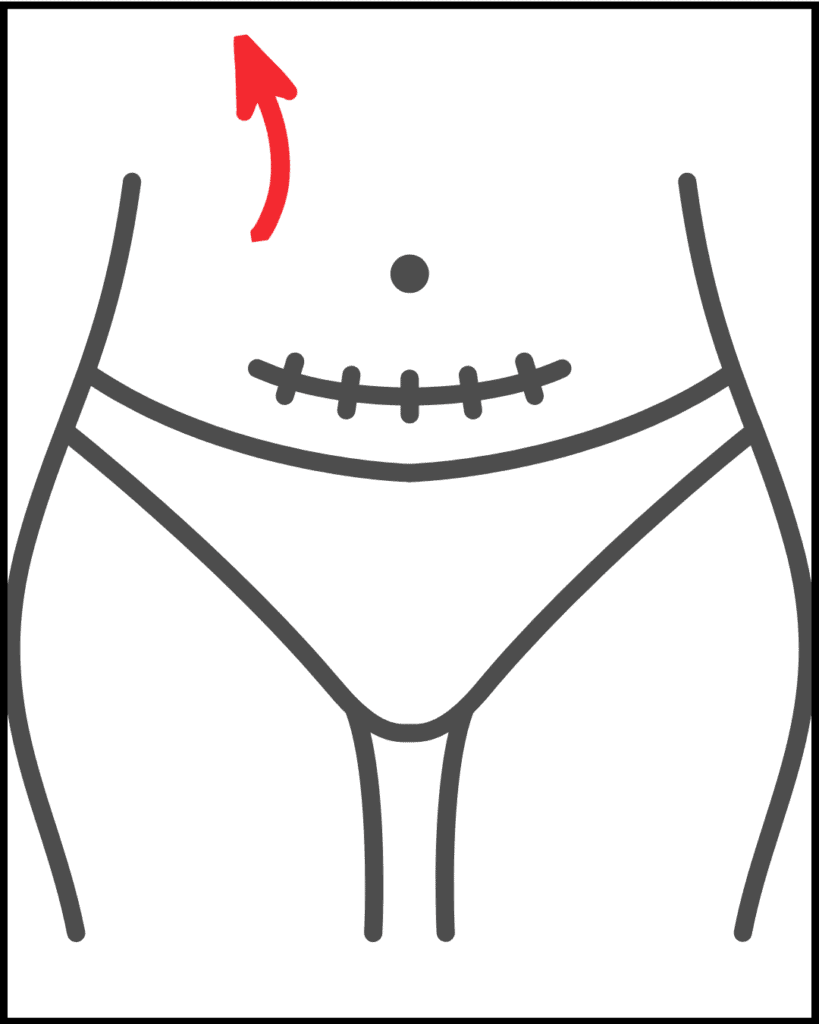
Now, you’ll move into massaging your abdomen.
Think of your trunk area as divided into 4 sections: upper right, upper left, lower right, and lower left. You’ll do manual lymphatic drainage section by section.
Start with your upper right area. Use gentle, light sweeping motions to stroke the fluid and encourage it to move toward your right armpit. Do 3-5 strokes.
4. Massage your upper left area

Move onto your upper left area, moving the fluid toward your left armpit with gentle sweeping motions. Do 3-5 strokes.
5. Massage your lower right area
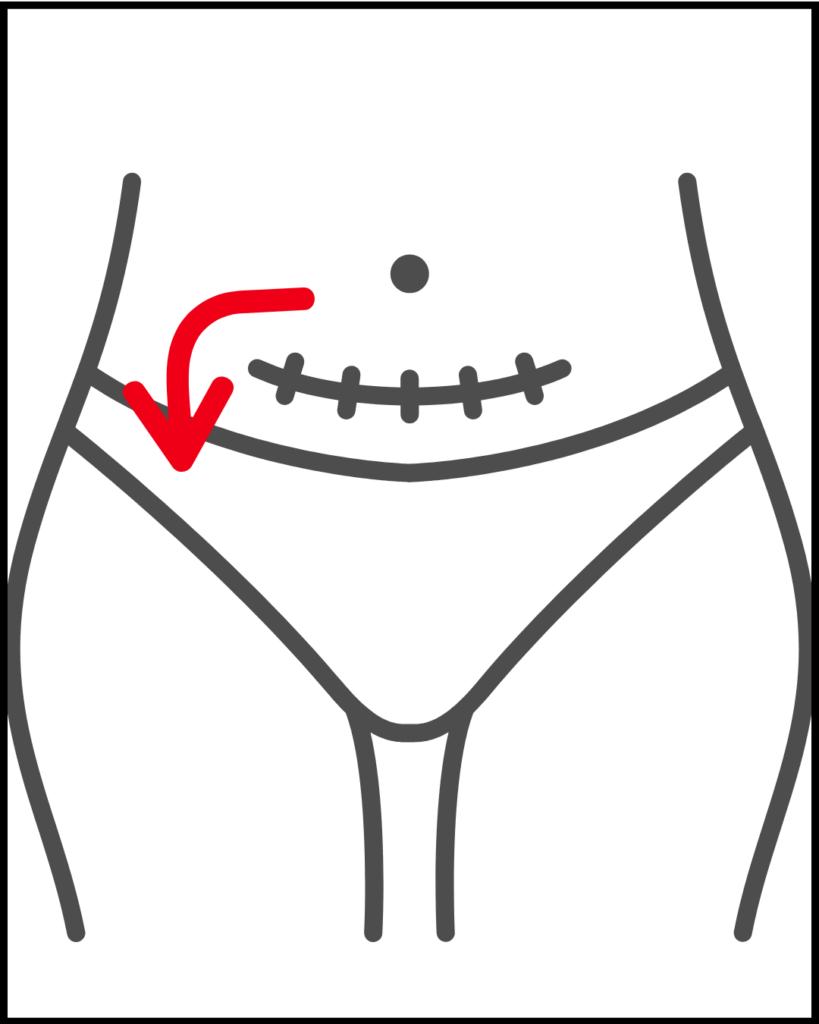
Now move to the lower right section of your abdomen. Once your incision is healed and your doctor has cleared you, you can gently go over your scar. Sweep the fluid toward your right groin area with 3-5 strokes.
6. Massage your lower left area
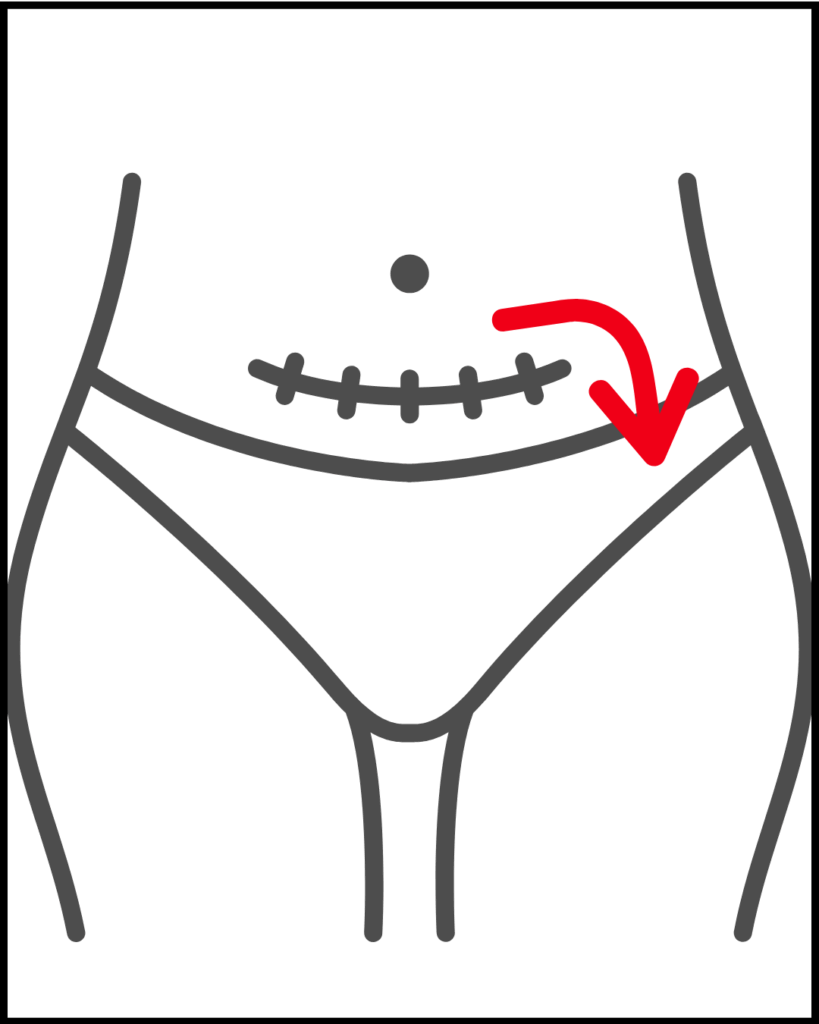
Repeat the same motions for your lower left area, moving fluid toward your left groin with 3-5 gentle strokes.
Your strokes should be gentle! Lymphatic vessels sit just under your skin, so you don’t need to push hard like during a massage for your muscles. All you need is some light pressure.
If you notice that one area is more swollen than others, you can spend a little extra time there.
7. Finish with a few deep breaths
End your routine with another round of deep breathing to stimulate those deeper lymphatic vessels. You can do this routine once or twice daily.
It should feel comfortable and never painful. If you experience any unusual pain, redness, or discomfort, stop and check in with your healthcare provider.
There are many benefits of lymphatic drainage massage and very few dangers, but it’s always best to rely on medical guidance even after an uncomplicated C-section.
Other Ways to Reduce Swelling After C-Section
Compression
Compression garments can help push fluid back into circulation so your body can filter it out. These are specially designed medical garments, not just tight clothing, which you should avoid wearing.
If you’re dealing with leg swelling, compression socks are a simple option that can make a big difference. For abdominal swelling, you can use a postpartum compression wrap or binder once your C-section incision has healed.
Just make sure whatever you use isn’t too tight!
Here’s my favorite compression garment for C-section moms:
Movement
Wait until your doctor clears you for activity, but once you get the green light, physical activity is one of the best things you can do for your lymphatic system.
Your lymph doesn’t have a pump like your heart does, so it relies on your muscles to move it along. Even something as simple as a short walk around your house or neighborhood can help reduce fluid retention.
As you get further into your recovery and if swelling is still hanging around, you can try gentle vibration plate exercises or rebounder workouts. I often recommend these for lymphatic drainage.
Elevation
When you’re lying down or sitting all day, gravity can work against you. You can elevate your legs above the level of your heart to help the fluid drain back toward your core, where your body can process it.
Try propping your feet up on pillows while you’re feeding your baby or resting on the couch. It’s one of the underestimated C-section recovery tips, and even 15-20 minutes of elevation can help.
How Long Does Swelling Last After C-Section?
Everybody is different, but most moms notice their swelling starts to go down after 1 to 2 weeks after delivery. However, some swelling can linger for a few weeks, especially if you had a lot of fluid retention during pregnancy.
Healing from major surgery and getting rid of all that extra fluid takes time, but you can do more than just wait for your body to do its thing.
Lymphatic drainage massage, wearing compression garments, movement (once cleared), and elevation can all help you feel more comfortable. You’re doing a great job, mama!
FAQs
When should I worry about swollen feet after a C-section?
Some puffiness in your feet is completely normal after a C-section, but there are a few signs that mean you should call your doctor. If one foot is much more swollen than the other, or if the swelling comes with pain, warmth, or redness, get it checked out. These can be signs of a blood clot.
Also, reach out to your healthcare provider if the swelling gets worse after the first week. It should always be getting better instead of worse as you move into full recovery.
How to reduce stomach swelling after C-section?
Doing a manual lymphatic drainage routine once or twice a day (once cleared by your doctor) is one of the best ways to reduce swelling after a Cesarean section. Wearing a supportive abdominal binder can also help, along with moving your body when you’re able to.
Just make sure you’re cleared by your doctor first!
Does drinking water help postpartum swelling?
It might seem backward, but yes, drinking plenty of water helps flush out extra fluid from your body. When you’re dehydrated, your body holds onto the fluid it has as a survival mechanism. When you’re well-hydrated, your kidneys filter and eliminate what you don’t need.
During C-section recovery, try to drink at least 8-10 glasses of water a day, or more if you’re breastfeeding.
More Support with Your C-Section Swelling
You’re in the thick of it right now, healing from major surgery while caring for a tiny human who needs you around the clock. That’s no small thing, and you’re doing an incredible job.
I hope the techniques and information I’ve shared here help you feel a bit more comfortable as your body recovers.
If you’re looking for more ways to support your lymphatic system and reduce swelling, I’ve created some resources that dive deeper into lymphatic drainage:




